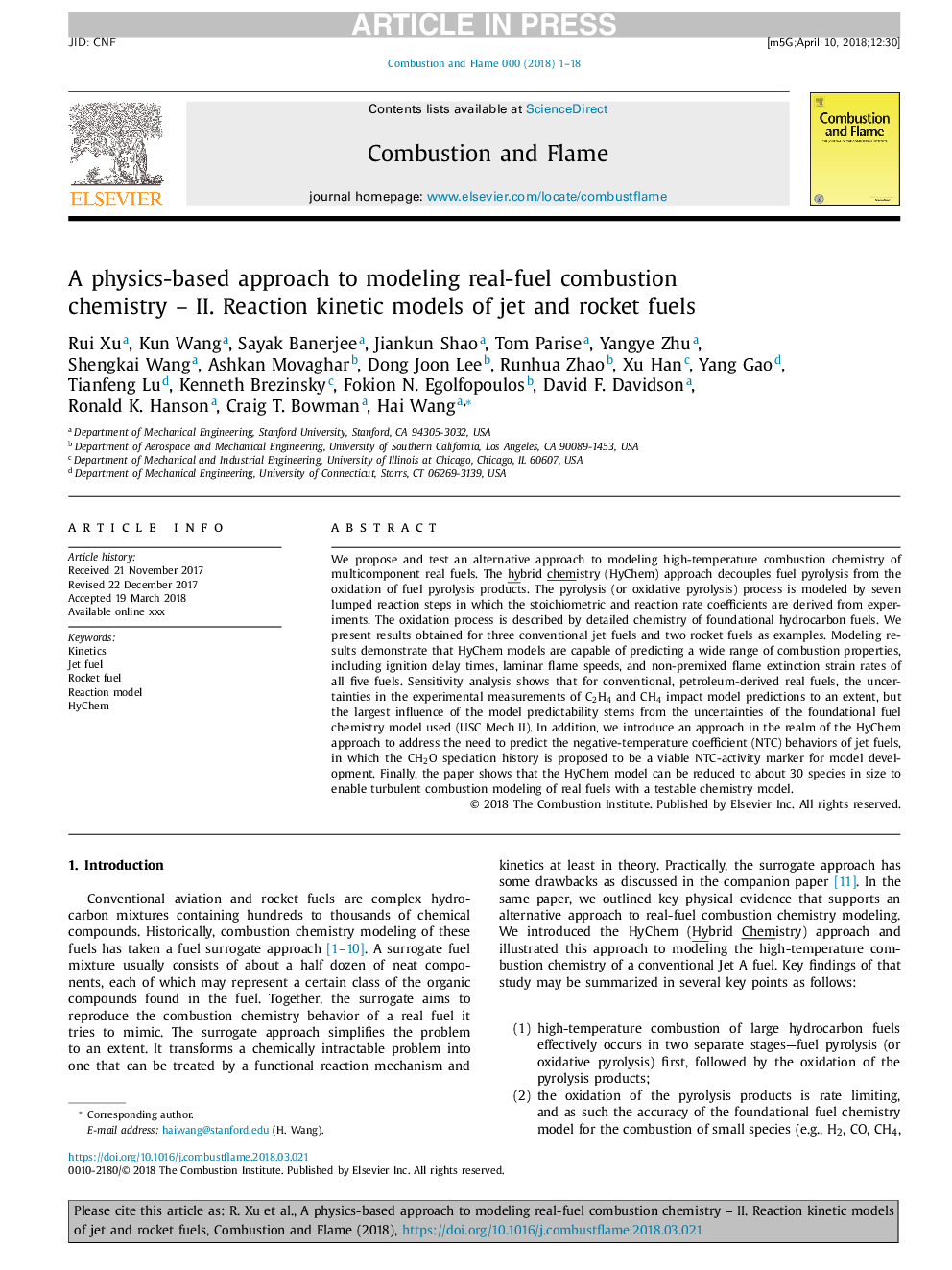| Article ID | Journal | Published Year | Pages | File Type |
|---|---|---|---|---|
| 6593624 | Combustion and Flame | 2018 | 18 Pages |
Abstract
We propose and test an alternative approach to modeling high-temperature combustion chemistry of multicomponent real fuels. The hybrid chemistry (HyChem) approach decouples fuel pyrolysis from the oxidation of fuel pyrolysis products. The pyrolysis (or oxidative pyrolysis) process is modeled by seven lumped reaction steps in which the stoichiometric and reaction rate coefficients are derived from experiments. The oxidation process is described by detailed chemistry of foundational hydrocarbon fuels. We present results obtained for three conventional jet fuels and two rocket fuels as examples. Modeling results demonstrate that HyChem models are capable of predicting a wide range of combustion properties, including ignition delay times, laminar flame speeds, and non-premixed flame extinction strain rates of all five fuels. Sensitivity analysis shows that for conventional, petroleum-derived real fuels, the uncertainties in the experimental measurements of C2H4 and CH4 impact model predictions to an extent, but the largest influence of the model predictability stems from the uncertainties of the foundational fuel chemistry model used (USC Mech II). In addition, we introduce an approach in the realm of the HyChem approach to address the need to predict the negative-temperature coefficient (NTC) behaviors of jet fuels, in which the CH2O speciation history is proposed to be a viable NTC-activity marker for model development. Finally, the paper shows that the HyChem model can be reduced to about 30 species in size to enable turbulent combustion modeling of real fuels with a testable chemistry model.
Related Topics
Physical Sciences and Engineering
Chemical Engineering
Chemical Engineering (General)
Authors
Xu Rui, Wang Kun, Sayak Banerjee, Shao Jiankun, Tom Parise, Zhu Yangye, Wang Shengkai, Ashkan Movaghar, Lee Dong Joon, Zhao Runhua, Han Xu, Gao Yang, Lu Tianfeng, Kenneth Brezinsky, Fokion N. Egolfopoulos, David F. Davidson, Ronald K. Hanson,
